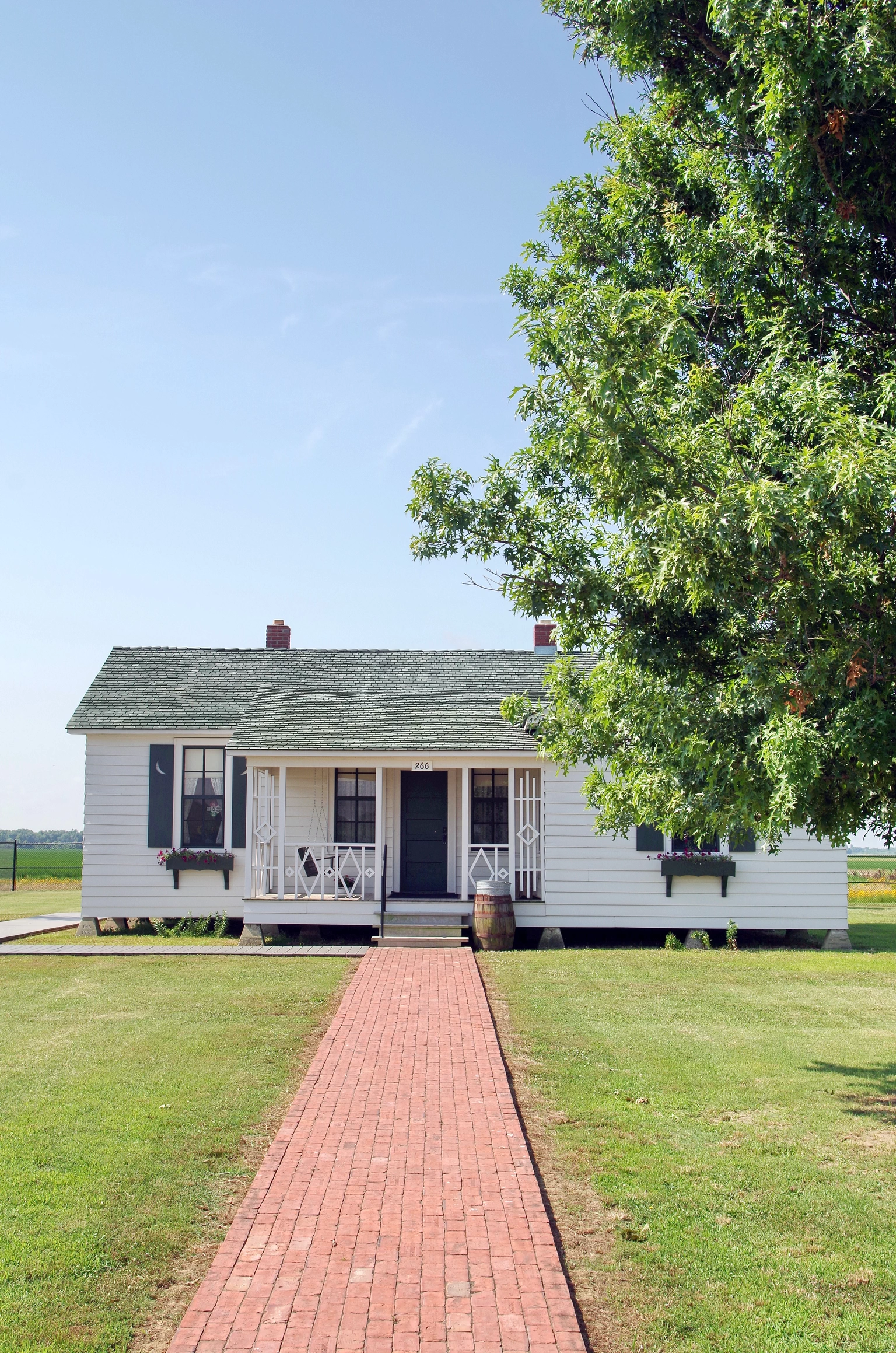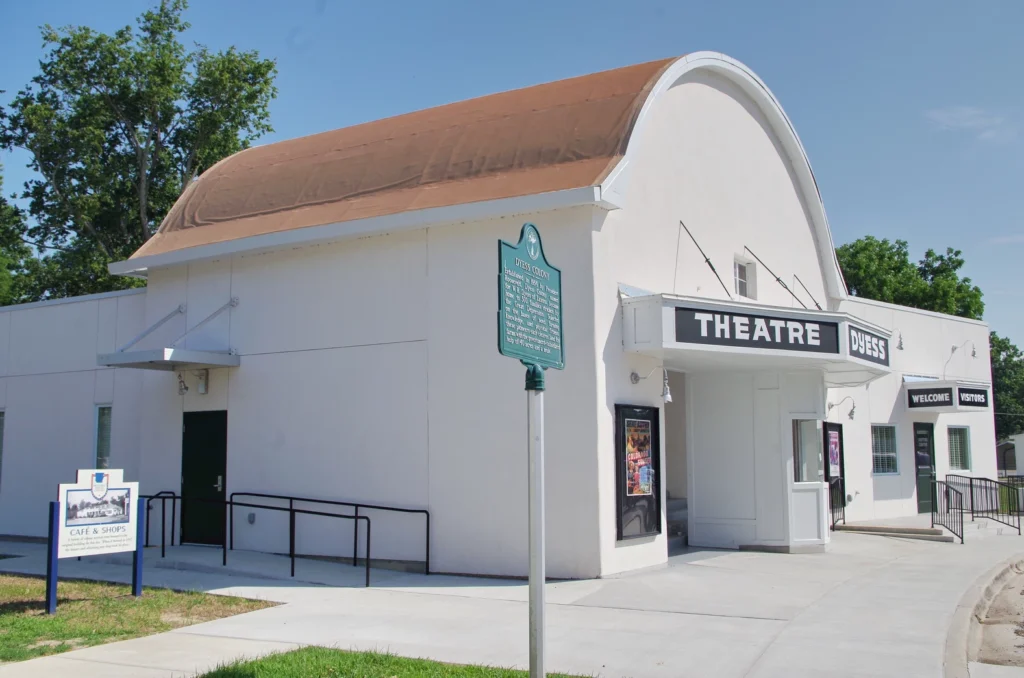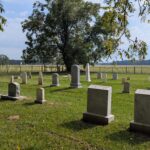

One would be hard-pressed to find an Arkansan from any era more famous than Johnny Cash. On September 24 of this year, a statue of Cash sculpted by artist Kevin Kresse was placed in the U.S. Capitol, greeting visitors to Statuary Hall. He is the first musician ever to be honored in this iconic space, which includes two statues from each state commemorating notable historical figures. The bronze statue depicts Cash with a guitar slung across his back and a Bible in hand, symbolizing his enduring faith.
Known to his fans as “The Man in Black” because of his favored stage attire, Cash was a towering presence in the music industry for decades. He recorded more than 1,500 songs, many of which he wrote himself, and won 11 Grammy awards. Cash was inducted into the Rock and Roll, Country Music, Rockabilly, Gospel Music and Nashville Songwriters halls of fame. Imagining American music without his contributions is almost incomprehensible.
Thanks to the efforts of a dedicated group of citizens and organizations, the house and part of the agricultural community where Cash spent his childhood have been acquired and restored as one of Arkansas State University’s Arkansas Heritage Sites. Visitors to the historic Dyess Colony in Mississippi County walk away with a deeper understanding of the hardscrabble life that instilled in Johnny Cash a reverence for family, God and truth—values that shaped his music throughout his half-century career.
The story begins in Kingsland, Arkansas, in 1932. On February 26 of that year, a baby boy was born to Ray and Carrie Cash. They called the child J.R., short for John Ray. He was the fourth of seven siblings: Margaret Louise, Jack, Joanne, Reba, Roy and Tommy.
Times were tough in Depression-era Arkansas, and many families, including the Cashes, were looking to the government for relief. Ray’s Cleveland County farm had failed due to plummeting cotton prices. With their family facing poverty and hunger, he and Carrie were desperate for a way out.
Help came through an innovative program created in 1934 as part of President Franklin Roosevelt’s New Deal. The Works Progress Administration and the Federal Emergency Relief Administration acquired 16,000 acres of swampy, forested land in Mississippi County and divided it into 20- to 40-acre potential farmsteads. Families like the Cashes could apply for a plot, which included a five-room house, barn, chicken coop, smokehouse and enough money to begin the arduous task of clearing the land and growing crops. Colonists were expected to repay the government after turning the land into productive farmland.
In addition to homes and farms, the community included a center, administration building, schools, a theater and more. Initially called Colonization Project #1, the settlement was officially dedicated as Dyess Colony in 1936, named after William R. Dyess, a plantation owner from Mississippi County and the first head of the Works Progress Administration in Arkansas.

Nearly 500 out-of-work Arkansas farm families—2,500 people in total—eventually settled at Dyess, including the Cash family, who moved there from Kingsland in 1935 when J.R. was just three years old. The boy spent much of the next 15 years working alongside his parents and siblings in the farm fields, helping to pay off their debts. Life wasn’t easy, but music provided an escape. J.R. was surrounded by songs—his mother’s folk tunes and hymns, as well as the working music people sang in the fields.
Young Cash also soaked up church hymns, country/western music from radio station WMPS in Memphis and broadcasts from Nashville’s Grand Ole Opry. At night, he often stayed up listening to music from powerful Mexican border stations.
Although he never learned to read music, J.R. started singing at age 4, often joining his mother at home. She bought him his first guitar for his tenth birthday, and as a teenager, he performed on radio station KLCN in Blytheville.
After graduating from Dyess High School in 1950, Cash enlisted in the Air Force. After his service, he eventually found his way to Sun Studios in Memphis, where he began recording under the name Johnny Cash. It was there, at the Birthplace of Rock and Roll, that the world was introduced to his singular voice and compelling songwriting through eternal classics like “I Walk the Line,” “Big River,” and “Folsom Prison Blues.”
Many of Cash’s songs reflected his early life at Dyess. “Pickin’ Time,” recorded in 1958, includes these lyrics:
I got cotton in the bottom land
It’s up and growin’ and I got a good stand
My good wife and them kids of mine
Gonna get new shoes, come Pickin’ Time.
Another hit song, “Five Feet High and Risin’” (1959), was inspired by the Tyronza River floods the Cash family endured:
Well, the rails are washed out north of town
We gotta head for higher ground
We can’t come back till the water goes down,
Five feet high and risin’.
As Cash grew older, he often spoke about the influence his childhood in Dyess had on his life and music. In one interview, he reflected: “When we grew up… it was second nature that we wouldn’t live in Dyess when we were grown. It was the aim of every person to get a better job. But if I hadn’t grown up there, I wouldn’t be what I am now. It was the foundation for what I became.”
Although most of the original buildings and colony houses are gone, Arkansas State University, in partnership with the city of Dyess, has restored the Dyess Colony Administration Building, converted the old theater and pop shop into a visitor center and completely renovated the Johnny Cash Boyhood Home.
To begin your tour, visit the Dyess Colony Visitors Center at 110 Center Drive in Dyess. Inside, you can watch an orientation video, see historical exhibits and explore the gift shop. Your next stop will be the Administration Building Museum next door, where exhibits detail the colony’s establishment, typical colonist lifestyles and the impact growing up in Dyess had on Johnny Cash and his music. From there, a shuttle takes visitors to the fully restored Johnny Cash Boyhood Home, less than two miles from the Colony Center, which has been furnished as it appeared when the Cash family lived there, based on family memories.
Stepping into Dyess today is like stepping back into the world that shaped Johnny Cash’s music and character. Walking through the halls of the restored Administration Building, seeing the fields surrounding his boyhood home and hearing the stories of life in the colony allow visitors to grasp the hardscrabble roots that fed Cash’s songs of resilience, faith and heartache. His journey from life on a small Depression-era farmstead to a global icon is a testament to how deeply a place and its struggles can mold a person’s voice and purpose.

Whether you’re a devoted fan or a curious traveler, visiting the Dyess Colony and Johnny Cash Boyhood Home offers an unparalleled glimpse into the making of an American legend. It’s more than a tribute to his memory—it’s an invitation to feel the pulse of the land and the life that influenced the man behind the music.
Johnny Cash may have left Dyess behind, but the legacy of his roots runs deep in the Arkansas soil. When you visit, you’ll feel that connection, too. It’s a journey into the past, a tribute to an enduring legacy and a chance to walk in the footsteps of a legend.
For more information, visit DyessCash.AState.edu.
P.S. To share this blog, you can use this URL: https://downhomearkansas.net/the-historic-dyess-colony-and-johnny-cash-boyhood-home/.

Keith “Catfish” Sutton of Alexander, Arkansas, is one of the country’s best-known outdoor
journalists. His stories and photographs about fishing, hunting, wildlife and conservation have
been read by millions in hundreds of books, magazines, newspapers and websites. He and his
wife Theresa own C&C Outdoor Productions Inc., an Arkansas-based writing, photography,
lecturing and editorial service.




Get DownHome Arkansas blog posts, news, and more directly by email. Give us your name and email if you’d like to subscribe.